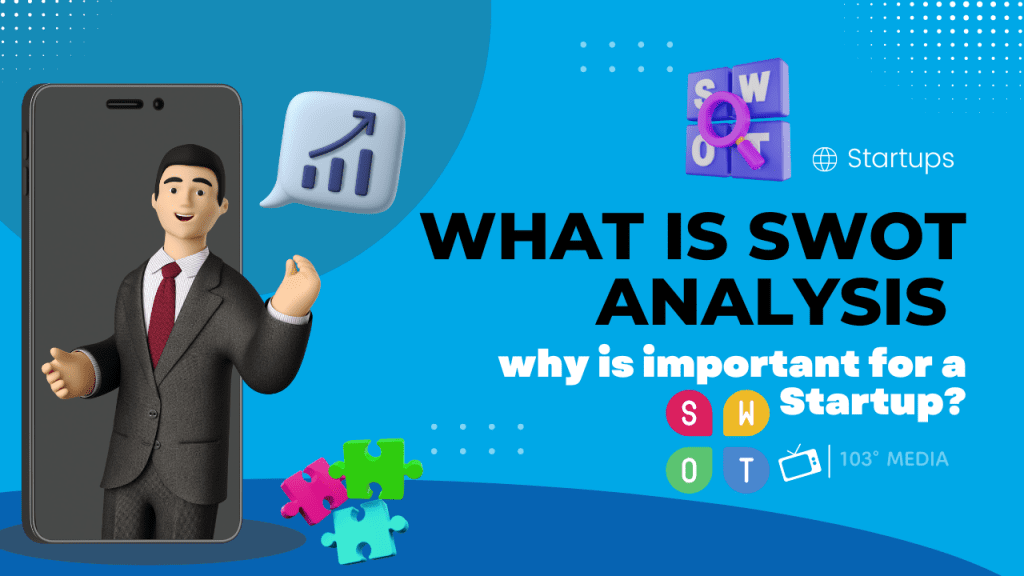SWOT (strengths, weaknesses, opportunities, and threats) analysis is a way to figure out how competitive a company is and how to plan its future. A SWOT analysis looks at both the inside and outside of a business, as well as its current and future potential.
A SWOT analysis is meant to help you look at the strengths and weaknesses of an organization, its projects, or its industry in a realistic, fact-based, and data-driven way. The organization needs to keep the analysis accurate by avoiding preconceived ideas or gray areas and instead focusing on real-life situations. Companies should look at it as a guide, not always as a rule.


What Makes Up a SWOT Analysis?
Every SWOT analysis will look at these four things. Even though each company will find different things in each of these categories, a SWOT analysis is not complete without all of the following:
Strengths
Strengths are the things that a company does well and that set it apart from its competitors. For example, a strong brand, a loyal customer base, a strong balance sheet, unique technology, and so on. For example, a hedge fund may have made its own trading strategy that does better than the market. Then, it has to decide how to use those results to get more investors.
Weaknesses
When an organization has weaknesses, it can’t do as well as it could. They are areas where the business needs to improve to stay competitive: a weak brand, a higher-than-average turnover, high levels of debt, an inefficient supply chain, or a lack of capital.
Opportunities
Opportunities are good things in the outside world that could give a business an edge over its competitors. For example, if a country lowers its tariffs, a car company can sell more cars in a new market and get a bigger share of that market.
Threats
Threats are things that could cause problems for an organization. For example, a drought is a threat to a company that grows wheat because it can hurt or destroy the crop. Other common threats include things like the price of materials going up, the amount of competition going up, the lack of workers, etc.
What a SWOT analysis can do for a new business?
Are SWOT analyses really worth the time of people who own businesses? You can bet your last dime on it! In fact, it has a number of good things about it.
1. Help Your Team Grow
In a startup, each person you hire will have a bigger impact on the business than they would in a big company because they make up a bigger share of your staff. So, it’s more important for startups to find the right people to join their teams. That should start with figuring out what skills your business doesn’t have so you can find someone with those skills.
2. Find out where your business is going.
Sometimes it’s hard to even know which way to take your business because there are so many options. A SWOT analysis forces you to stop and think about which opportunities will help you grow and succeed the most. This step in business planning should be a big part of how you plan to run your business in the future.
3. Figure out where you fit in the business
Most likely, you have a lot of competition in the world. Where do you fit in with all these other people in the same business?
By using a SWOT analysis to look at your company’s strengths and weaknesses, you can find out what makes you different and what gives you an edge over others. You can also find ways to get better and make yourself more competitive. From there, you just need to use strategic planning to figure out how to work on your weaknesses and make the most of your strengths, and you’ll be on the fast track.
4. Find ways to make the most of your business’s strengths.
Every business has its strong points, even new businesses that feel like small fish in a huge pond full of sharks. Trust me, you’ll always have something they don’t.
You can use a SWOT analysis to not only figure out what your strengths are but also find ways to make the most of them. Maybe your business is more flexible than others, which will let you take advantage of an untapped market segment. A SWOT analysis can help you make the most of your strengths, no matter what they are.
5. Set up a plan for marketing
Marketing is important for every business, but to make the most of every dollar (which is what every startup needs to do), you need well-thought-out marketing plans first.
The first step in making a marketing plan is to do a SWOT analysis. “Strengths,” tell you what parts of the business to highlight in your marketing, while “opportunities” can help you figure out the best audiences and platforms for your marketing content. A SWOT analysis reveals so much information that it might as well be a treasure hunt. For example, it can help you find new ways to use social media and find growth opportunities among your current customers.
How to conduct a SWOT analysis?
A SWOT analysis is best done by a group of people with different points of view and stakes in your business. Management, sales, customer service, and even customers themselves can all give good ideas. Also, the process of doing a SWOT analysis gives you a chance to get your team together and get them involved in and committed to your company’s strategy.
Most people use a four-square SWOT analysis template to do a SWOT analysis, but you could also just make lists for each category. Use the method that helps you keep track of and understand the results the best.
I think you should have a brainstorming session to figure out what goes into each of the four groups. You could also have each member of your team fill out our free SWOT analysis template and then meet to talk about and put the results together. Don’t worry too much about giving details at first as you go through each category. Bullet points may be the best way to start. Just write down the things you think are important in each of the four categories.
When you’re done thinking of ideas, make a final, prioritized version of your SWOT analysis by putting the most important things in each category at the top and the least important things at the bottom.
How to ask questions for a SWOT analysis?
I’ve put together a list of questions to help you build each part of your SWOT analysis. There are a lot of other questions you could ask; these are just starting points.
Strengths (internal, positive factors)
Strengths are the good things about your organization that are both visible and invisible. You have control over them.
- What do you do well?
- What resources do you have in-house? Think about what comes next: a) The good things about a person, like their knowledge, history, education, credentials, network, reputation, or skills. b) The company’s real assets, such as money, credit, existing customers or channels of distribution, patents, or technology.
- What do you have going for you that your competitors don’t?
- Do you do a lot of research and come up with new ideas? Places where things are made?
- What other good things inside your business add value or give you an edge over your competitors?
Weaknesses (internal, negative factors)
Weaknesses are things about your business that make it less valuable or put you behind the competition. To compete with your best competitor, you need to get better at these things.
- What things that you can change make it harder for you to get or keep a competitive edge?
- What needs to be fixed so you can reach your goals or compete with your strongest rival?
- What does your business lack, such as knowledge, access to skills or technology, or a certain skill?
- Does your business only have so much money or time?
- Is it hard to find your business?
Opportunities (external, positive factors)
- Opportunities are things in the outside world that make your business more likely to do well.
- What chances do you have in your market or environment that you can take advantage of?
- Do people like what they hear about your business?
- Has the market grown recently, or have there been other changes that have opened up a chance?
- Is the chance always there, or is there only a short time for it? To put it another way, how important is your timing?
Threats (external, negative factors)
Threats are things from the outside that you can’t change and that could put your strategy or the business itself at risk. You have no control over these things, but it might help to have plans for what to do if they happen.
- Who are your current or possible rivals?
- What things can’t change that could hurt your business?
- Are there problems caused by an unfavorable trend or event that could cause sales or profits to go down?
- What kinds of things could hurt your marketing efforts?
- Has there been a big change in how much suppliers charge or how easy it is to get raw materials?
- What about changes in how people act, the economy, or rules made by the government that could hurt your sales?
- Has a new product or technology come out that makes your products, equipment, or services useless?
How to use a SWOT analysis as a Startup?
When you look at a finished SWOT analysis, it can be both encouraging and discouraging. That is the truth of a new business. There are probably a lot of good things about the business, but there are also a lot of bad things. The next question is what to do with what you’ve learned.
You should use the good parts of your SWOT analysis to make the bad parts less important. Here is how that process works:
Strengths → Opportunities. By using your strengths, you can make the most of opportunities.
Strengths → Threats. Play to your strengths to make threats less likely to happen.
Weaknesses → Opportunities. Look for ways to get better and get over your weaknesses.
Weaknesses → Threats. Stop threats from taking advantage of your weaknesses.
Let’s go back to the example of the student choosing a job. If a student is shy, they probably shouldn’t go into sales as a career. They can learn all the sales techniques, but they probably won’t enjoy the job or be as good at it as someone who loves meeting and talking to new people. The student should choose a career that builds on their strengths and minimizes their weaknesses.
The same goes for your new business. If one of your weaknesses is that you have a small team and everyone is too busy, you shouldn’t make a strong social media plan with multiple posts a day. But you can take selfie videos or photos at events to show how your startup is doing and post them on your pages.
With opportunities and threats from the outside, you should keep focusing on your strengths. Threats could be bad news about your business or the fact that you are entering a market that is already full. You can’t completely avoid these threats, but you can use your strengths to make a plan to face them or build around them.
Next, write down your goals and objectives and use your SWOT analysis to help you reach them. Make a plan of what you want to do and talk about how you will know if it worked.
In the end, you’ll have a marketing plan that takes into account all of your strengths, weaknesses, opportunities, and threats. You will build a strong brand with clear goals and a clear reason for being. Then, your analysis will help everyone on the marketing team of your startup agree on the same goals and work together to reach them.
Example of a SWOT Analysis
In 2015, Value Line did a SWOT analysis of The Coca-Cola Company. It found that the company’s strengths were its well-known brand name, its large distribution network, and its opportunities in emerging markets. But it also pointed out weaknesses and threats, such as changes in foreign currencies, a growing public interest in “healthy” drinks, and competition from other companies that make healthy drinks.
Value Line asked some hard questions about Coca-strategy Cola’s because of its SWOT analysis, but it also said that the company “will probably remain a top-tier beverage provider” that gave conservative investors “a reliable source of income and a little bit of capital gains exposure.”
Coca-Cola is still the sixth strongest brand in the world five years after the Value Line SWOT analysis (as it was then). In the five years since the analysis was done, the value of Coca-Cola shares (traded under the symbol KO) has gone up by more than 60%.
Think about a made-up organic smoothie company to get a better idea of what a SWOT analysis is. It did a SWOT analysis to learn more about how it competes in the smoothie market and what it could do better.
Through this analysis, it found that its strengths were getting good ingredients, giving personalised service to customers, and having good relationships with its suppliers. When it looked at how it ran its business, it found a few places where it was weak: not enough product variety, a high turnover rate, and old equipment.
It looked at how the outside world affects its business and found opportunities in new technologies, untapped demographics, and a shift in culture toward healthy living. It also found dangers, like a crop-damaging winter freeze, a global pandemic, and kinks in the supply chain.
The company used the SWOT analysis along with other planning tools to take advantage of its strengths and outside opportunities to get rid of threats and improve areas where it was weak.
In conclusion
A SWOT analysis is a great way to guide meetings about business strategy. It’s helpful to have everyone in the room talk about the company’s main strengths and weaknesses, list the opportunities and threats, and come up with ideas. Often, the SWOT analysis you had in mind before the session changes as you learn about things you didn’t know about and would have missed without the group’s help.
A SWOT analysis can be used for a company’s overall business strategy or for a specific part of the business, like marketing, production, or sales. So, you can see how the overall strategy that comes out of the SWOT analysis will affect the smaller parts of the business before you commit to it. You can also do a segment-specific SWOT analysis that feeds into a SWOT analysis of the whole business.
SWOT is a useful tool for planning, but it has its limits. It is just one way to plan for a business, and it shouldn’t be used by itself. Also, not every point in each category has the same level of importance. SWOT doesn’t take into account how the weights are different. So, a deeper analysis using a different method of planning is needed.




